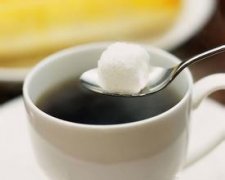Colombian coffee is one of the individual coffees sold in the world under the name of the country.

Coffee was first introduced to Colombia in 1808 by a priest from the French Antilles via Venezuela. Today the country is the second largest producer after Brazil, with an annual production of 13 million bags of 60 kg each, compared to Brazil's 22 million bags. Coffee's place in Colombia is illustrated by the fact that all vehicles entering the country must be sprayed to avoid inadvertent disease and damage to coffee trees.
Colombia coffee is one of the few single-origin coffees sold worldwide under its name. In terms of quality, it has earned accolades that no other coffee can match. The country is the world's largest exporter of Arabica coffee beans, while Robusta coffee is rarely grown. It is also the world's largest exporter of washed coffee beans. Colombia is more concerned with product development and production promotion than other producing countries. It is this, coupled with its superior geographical and climatic conditions, that makes Colombia coffee delicious and famous all over the world.
The coffee-producing region of the country is located in the foothills of the Andes, where the climate is mild and the air humid. Colombia has three Cordilleras (sub-mountain system) running north-south, right into the Andes. Coffee is grown along the highlands of these mountains. The terraces provide a diverse climate, which means that harvest season occurs throughout the year and different types of coffee ripen at different times. And fortunately, unlike Brazil, Colombia doesn't have to worry about frost damage. There are approximately 2.7 billion coffee trees in Colombia, of which 66 per cent are grown in modern plantations and the rest in small, traditionally managed farms.
The main productive areas of Colombia are located in the Central and Eastern Mountains. The most important plantations along the central mountain range are located in Medellin, Armenia and Manizales. Of the three regions mentioned above, Medellin produces the best coffee quality and high prices, characterized by full grains, rich nutrients, strong aroma and moderate acidity. These three regions are collectively referred to as MAM(the initials of the names of the major cities in the three regions). MAM is the origin of most of Colombia's top coffee for export. Along the eastern mountains, the two best areas are around Bogota and further north around Bucaramanga. Bogotá coffee is less acidic than Medellin coffee, but the quality is comparable.
German imports account for 25 per cent of Colombia's total exports, reflecting the high quality of its coffee. Coffee grades are divided into three grades: Supreme (Supreme), Excellent (Excelso) and Excellent (UGQ, Unusual Good Quality). Klauss coffee in the excellent grade is exported to Germany, and Europa coffee is exported to Nordic countries. Excellent coffee and premium coffee are available in most coffee shops. The difference between the two professional regulations is that the coffee beans used in the top coffee are larger, and the raw materials are taken from the newly harvested coffee beans, which makes it easier to ensure the quality of the product. Premium coffee is usually softer and slightly more acidic than premium coffee, but both are aromatic coffees with moderate particles and excellent fruit. Colombia coffee is often described as having a silky smooth taste, and of all coffees, it has the best balance, soft, smooth taste and ready to drink.
Important Notice :
前街咖啡 FrontStreet Coffee has moved to new addredd:
FrontStreet Coffee Address: 315,Donghua East Road,GuangZhou
Tel:020 38364473
- Prev

Columbia Coffee Culture Coffee Culture History
Colombian Coffee-produced in Colombia, roasted coffee beans give off a sweet aroma, with sweet in acid and medium in bitterness, and are often used in high-grade blended coffee because of the right concentration. Colombian coffee has a kind of bitter experience, clear and astringent as life, but bitterness is necessary in life.
- Next

Introduction of Rose Summer Coffee Bean
Rosa originated from a very rare wild species in Ethiopia, and the beans may be named after this coffee bean found near the local village called Rosa. The coffee tree is tall, its leaves are slender, and it is not afraid of coffee rust. It is characterized by a wide gap between branches on the trunk. The appearance of raw beans is slender, and ripe beans have strong and rich fruit aromas. I personally feel full-bodied.
Related
- Detailed explanation of Jadeite planting Land in Panamanian Jadeite Manor introduction to the grading system of Jadeite competitive bidding, Red bid, Green bid and Rose Summer
- Story of Coffee planting in Brenka region of Costa Rica Stonehenge Manor anaerobic heavy honey treatment of flavor mouth
- What's on the barrel of Blue Mountain Coffee beans?
- Can American coffee also pull flowers? How to use hot American style to pull out a good-looking pattern?
- Can you make a cold extract with coffee beans? What is the right proportion for cold-extracted coffee formula?
- Indonesian PWN Gold Mandrine Coffee Origin Features Flavor How to Chong? Mandolin coffee is American.
- A brief introduction to the flavor characteristics of Brazilian yellow bourbon coffee beans
- What is the effect of different water quality on the flavor of cold-extracted coffee? What kind of water is best for brewing coffee?
- Why do you think of Rose Summer whenever you mention Panamanian coffee?
- Introduction to the characteristics of authentic blue mountain coffee bean producing areas? What is the CIB Coffee Authority in Jamaica?

